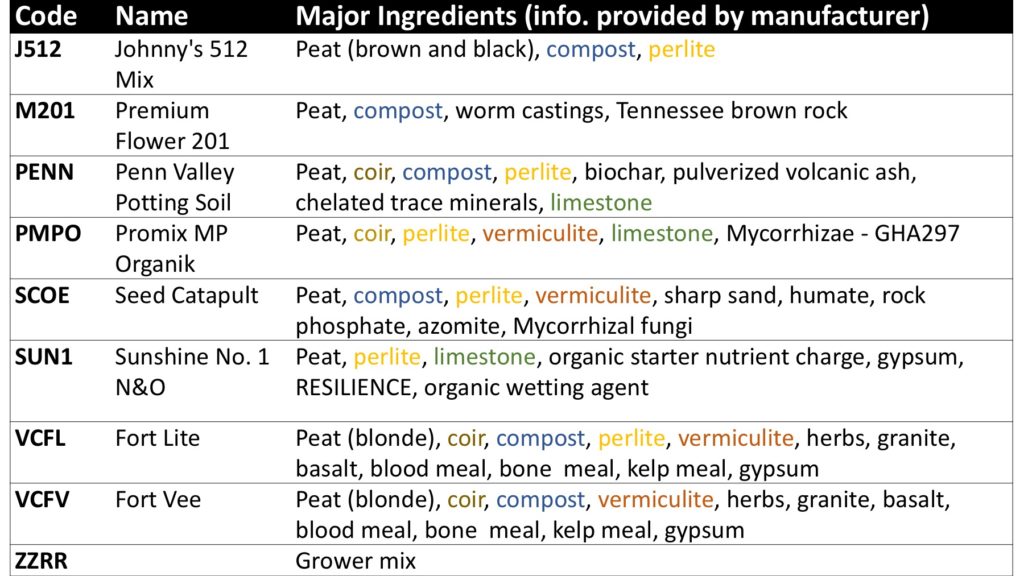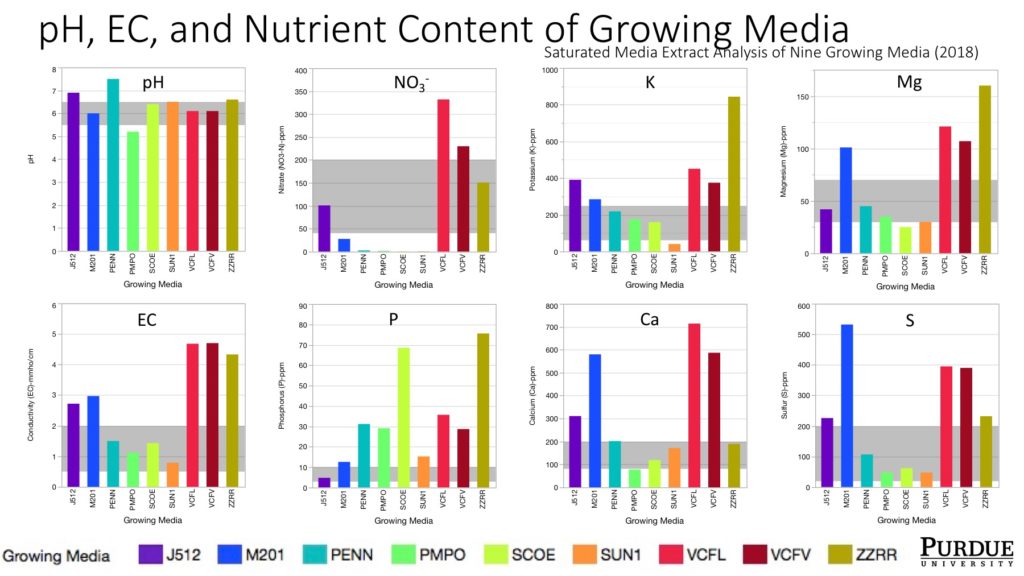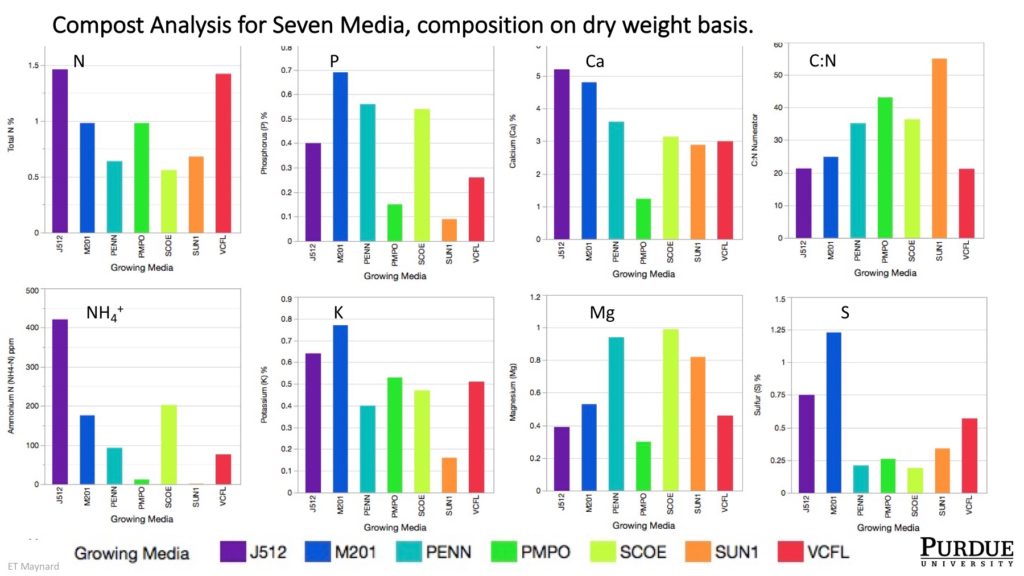Growing media for organic transplant production vary a lot in their chemical composition: pH, electrical conductivity, nutrient levels, and C:N ratio. This of course influences how seedlings grow. Knowing the characteristics of growing media can help growers decide whether adding nutrients or materials to adjust pH are likely to improve seedling growth. As part of our research into media for organic transplant production we would like to test growing media used by Indiana growers using organic practices. The media could be a commercially available product, or a product made on the farm. If you would like your media to be tested, please fill out the form at https://purdue.ca1.qualtrics.com/jfe/form/SV_eezVW7ubRhgh3Ip . Wait for notice that your submission will be accepted and then send 4 pints of media to Liz Maynard, Purdue University, 1101 Glendale Blvd, Suite 101-A, Valparaiso, IN 46383. To request a hard copy of the form, contact Liz Maynard, emaynard@purdue.edu, (219) 548-3674.
In our research so far we have obtained tests for 9 growing media, listed in Table 1. The graphs below illustrate the wide variation present among media. Figure 1 shows the results of saturated media extract (SME) analysis for 9 growing media. The SME analysis is commonly used for growing media. It provides a snapshot of nutrients readily available to plants, and measures of media pH, and electrical conductivity (EC). The gray bands on the graphs represent the adequate range for young plants in a standard soilless media based on research in conventional production systems. Figure 2 shows the result of a compost analysis for 7 of the growing media. It provides a measure of the total quantity of nutrients in the media; some of which would become available to plants over time. It also provides the C:N ratio, which can be correlated with how readily the organic material in the media will break down and supply N to plants.


